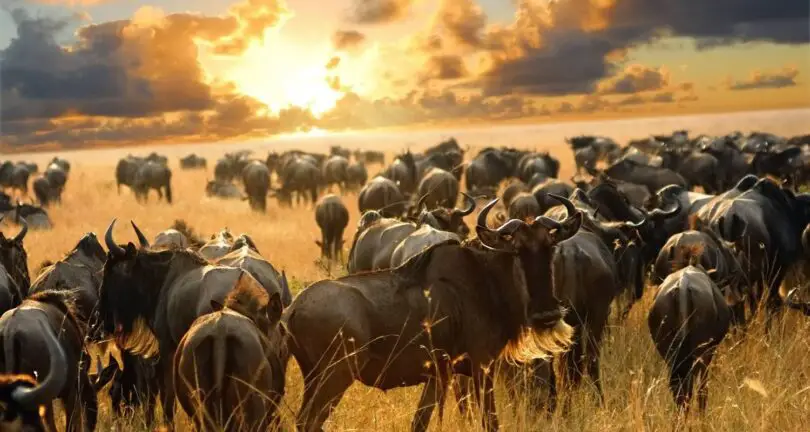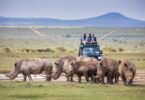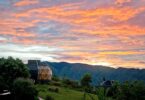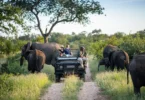You must have seen it on TV. The Great Wildebeest Migration is one of the most sought-after experiences for wildlife where over two million animals move simultaneously across the Arusha Serengeti plains. Also known simply as The Great Migration, it is the largest herd movement of animals on the planet. They occupy up to 1,000 animals per km², it is such a dense population of wildebeest that it can even be seen from space. The constant movement of columns of wildebeest, joined by a host of companions, follow an age-old route in search of grazing and water. The wildebeest are native to the Serengeti plains and as herbivores, they are first in line on a lion’s menu so lions are also commonplace in the Serengeti plains.
How is Great Wildebeest Migration From Serengeti Like?
They journey through the Serengeti up and around in a clockwise direction towards the Masai Mara plains in Kenya, before returning once again near the end of the year. The journey of these animals – the Great Wildebeest Migration – across the great Serengeti plains is a spectacle to see. It is an awe, humbling experience even on television.
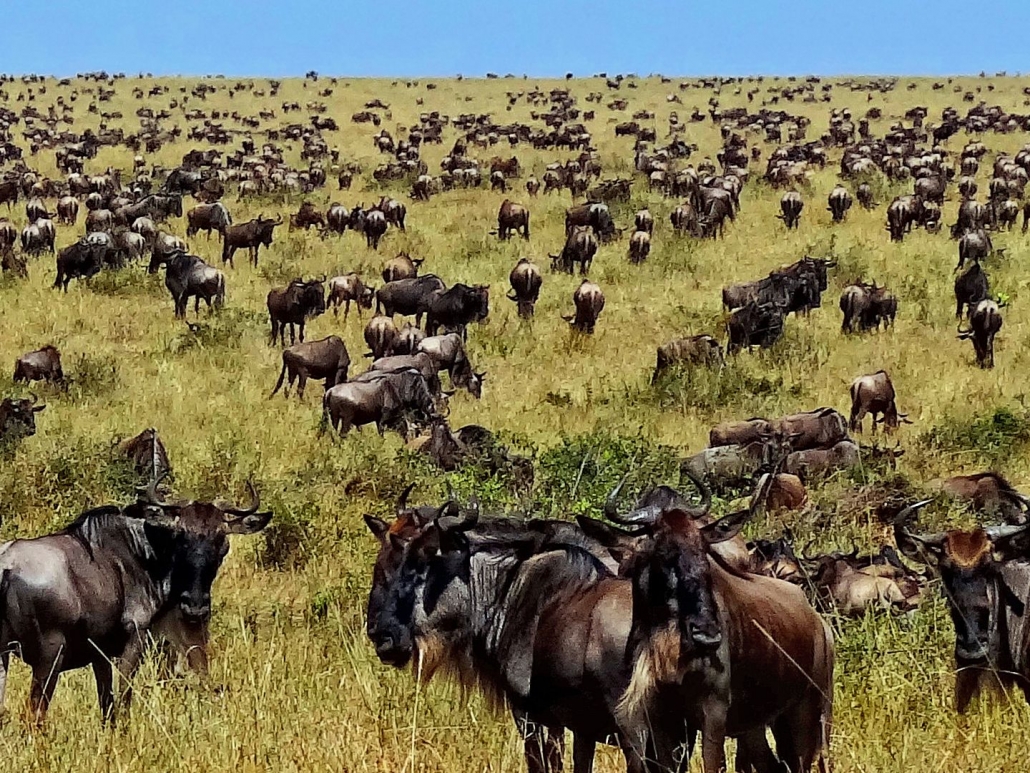
Wildebeest Migration. Photo/Tanzania Experts
Along the way, high drama is always present, as thousands of animals are taken by predators and thousands more are born, replenishing the numbers and sustaining the circle of life. For most of their lives, the wildebeest graze in the plains, then more than 1.5 million wildebeest migrate once every year, it is known as the great wildebeest migration. This annual migration northwest, at the end of the rainy season usually in May or June is now deemed as one of the “Seven Wonders of the Natural World”. They migrate in search of greener pastures crossing many crocodile-filled rivers and encountering all manner of danger.
How is Wildebeest Migration Like?
There is speculation on how the wildebeest manage to counter every danger on their path. Nature pundits argue that they are simply guided by survival instinct. During the migration, the wildebeest covers an impressive 800 to 1,000km. However, it is still unclear how they know which way to go, but it is generally believed that their journey is dictated primarily by their response to the weather; they follow the rains and the growth of new grass. And this is one of the many fascinating facts about the Great Wildebeest Migration.
While there is no scientific proof of it, some experts believe that the animals react to lightning and thunderstorms in the distance. It has even been suggested that wildebeest can locate rain more than 50km away. Predators like lions, leopards, cheetahs, hyenas, wild dogs and crocodiles make a feast of the movement. The spectacle of prey and game has made The Great Migration earn the title ‘the greatest show on Earth.’
The journey is danger-ridden, calves snatched up by predators, and slow ones caught by lions and other cats. Even the toughest wildebeests are not safe for they have to go down and up steep river slopes. As you can imagine, the waters are also filled with carnivorous crocodiles, it is indeed a great natural show to see.
The circuit takes the animals from the Ngorongoro Conservation Area (although not into the Crater itself) in the south of the Serengeti in Tanzania, up through the Serengeti and cross into the Masai Mara in Kenya and back again. Wildebeest, gazelles and zebra have different grass-eating habits creating an impressive symbiotic balance with the savannah grass.
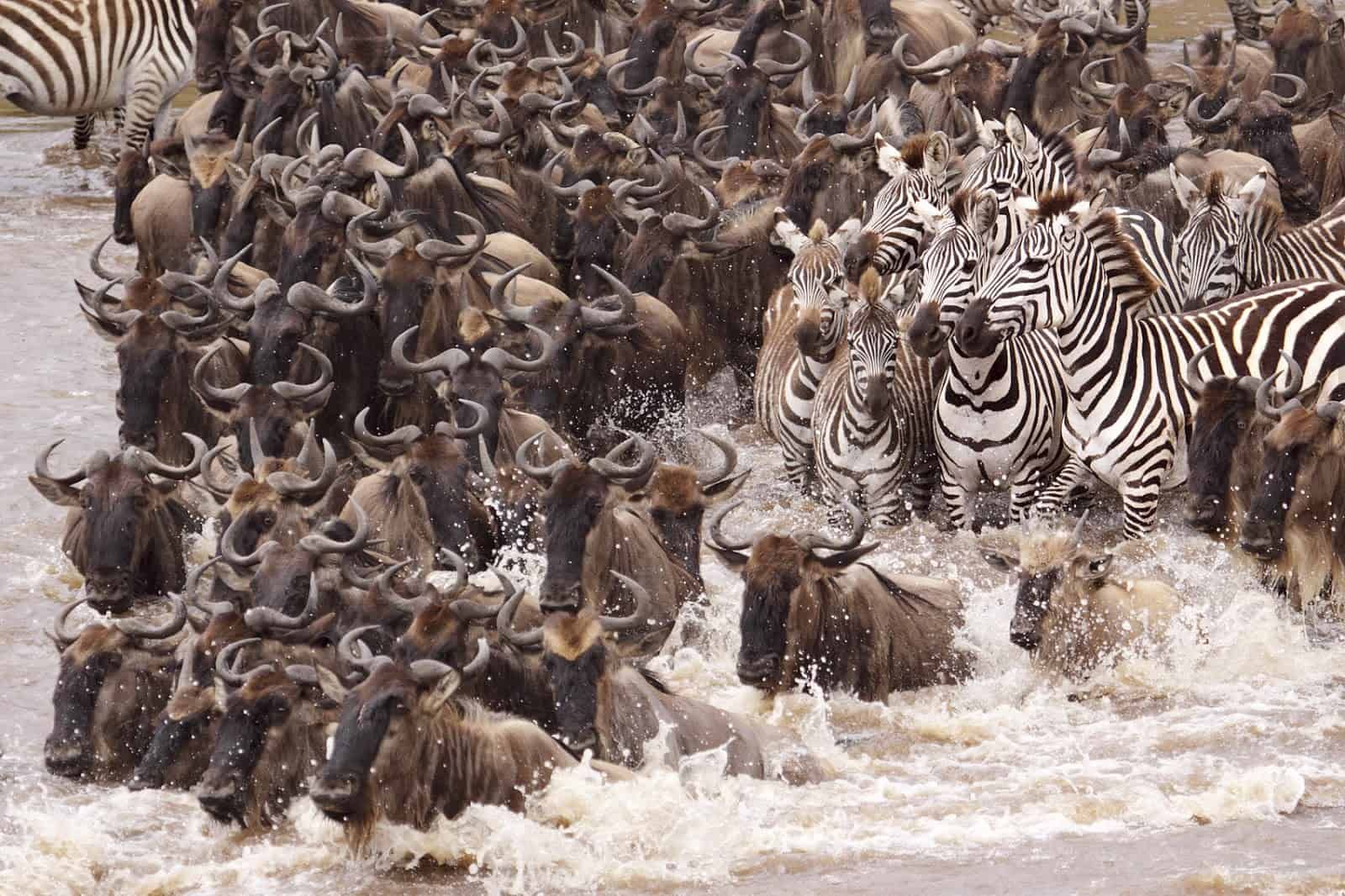
Wildebeest Migration. Photo/Pinterest
While some eat only the top of the tallest grass, another grazes the medium-height grass, and others eat only the last bit, uprooting the grass. This manner of grazing allows the savannah grass of the Serengeti to regrow in plenty.
When Does the Migration Season Start?
Around January each year, the Great Wildebeest Migration goes southwards along the eastern edge of the Serengeti and into the Ngorongoro Conservation Area. Since the crater offers very nutritious grass, and it is a cosy romantic location, this is where the wildebeest raise their newborn calves. How romantic is the Ngorongoro, consider this, at least 400,000 calves are born in just two to three weeks, that is a whopping 8,000 calves dropped every single day
This birthing season in the Ngorongoro crater is considered the start of the migration. Around late January or February, the herds move on to the short-grass plains on the northern gentle slopes of the Ngorongoro Crater. Predators pounce, right when the herds are filled with young ones. Hunting is relatively easy at this time and bloodthirsty tourists should visit the Arusha around this time, it is a spectacle of lions, cheetahs and leopards feasting.
Since this is the low tourist season, those who do visit will enjoy the lowest flight, travel and hotel rates possible; just food for thought. Around April, the wildebeest begin to move northwest towards the fresher grass of the central Serengeti. They are joined by thousands of zebra and various groups of antelope. The wildebeest cover several kilometres of the Serengeti in May and the mating season begins toward the end of the month.


